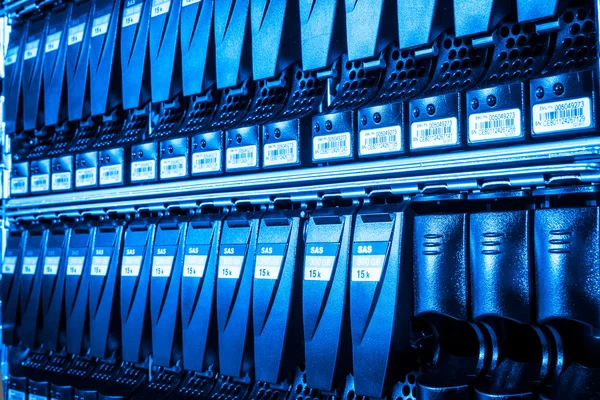In today’s interconnected world, the need for reliable and accessible data storage solutions has become paramount. Network Attached Storage (NAS) devices have emerged as a versatile and efficient solution for individuals and businesses alike. By providing centralized storage accessible over a network, NAS devices offer a range of benefits, including data backup, media streaming, and secure file sharing. In this article, we delve into the world of NAS devices, exploring the hardware options available to help you harness the full potential of this technology.
Understanding Network Attached Storage (NAS) Devices
A Network Attached Storage (NAS) device is essentially a specialized server designed for data storage and file sharing over a network. Unlike traditional storage solutions, NAS devices are self-contained units that operate independently from other servers or computers. They are equipped with their own operating systems, networking capabilities, and dedicated storage drives.
NAS devices offer several advantages over other storage solutions. They provide centralized storage, allowing multiple users to access files simultaneously. With built-in redundancy options, such as RAID (Redundant Array of Independent Disks), NAS devices offer data protection and fault tolerance. They can also be accessed remotely, making them an ideal solution for remote work environments.
Hardware Options for NAS Devices
- Pre-Built NAS Systems: Many companies offer pre-built NAS systems, designed specifically for this purpose. These systems typically come with the necessary hardware components, including the enclosure, CPU, RAM, and storage drives. Leading manufacturers such as Synology, QNAP, and Western Digital offer a range of pre-built NAS systems with varying specifications and storage capacities, catering to diverse user needs. These systems often feature user-friendly interfaces, comprehensive software packages, and robust security options.
- DIY NAS Builds: For tech-savvy enthusiasts and those seeking greater customization, building a NAS from scratch is an appealing option. This approach allows users to select each component according to their requirements, enabling greater flexibility and scalability. A DIY NAS build typically involves choosing a suitable enclosure, a compatible motherboard with sufficient SATA ports, a reliable power supply, ample RAM, and the desired storage drives. Popular open-source NAS software, such as TrueNAS or OpenMediaVault, can be installed to configure and manage the NAS system effectively.
- Repurposed Hardware: Repurposing old or unused hardware can be a cost-effective way to set up a NAS. An old computer or server with adequate storage space can be transformed into a NAS by installing the appropriate software. Linux-based operating systems like Ubuntu Server or CentOS, coupled with file-sharing protocols like Samba or NFS, can transform the hardware into a fully functional NAS. Although repurposed hardware might lack some features found in dedicated NAS devices, it can be an economical option for personal use or small-scale applications.
Factors to Consider
When selecting hardware for a NAS device, certain factors should be taken into account:
- Storage Capacity: Determine the amount of storage space required based on your needs. Consider factors such as the number of users, the types of files being stored, and future expansion requirements.
- Redundancy and Data Protection: Decide on the level of data redundancy and protection required. RAID configurations, such as RAID 1 (mirroring) or RAID 5 (striping with parity), offer varying levels of fault tolerance.
- Processing Power and RAM: Assess the processing power and RAM requirements based on the expected workload and the number of concurrent users accessing the NAS.
- Expansion and Upgradability: Evaluate the expandability options of the hardware, including the number of available drive bays and the capacity to add additional RAM or expansion cards in the future.
Conclusion
Network Attached Storage (NAS) devices provide an efficient and scalable solution for data storage, backup, and file sharing needs. Whether opting for a pre-built NAS system, embarking on a DIY NAS build, or repurposing existing hardware, there are hardware options available to suit different budgets and requirements. By considering factors such as storage capacity, redundancy, processing power, and upgradability, you can select the right hardware to maximize the potential of your NAS device. Embrace the power of NAS and unlock a world of centralized, accessible, and secure data storage.
Disclaimer: as an Amazon Associate I earn from qualifying purchases.

